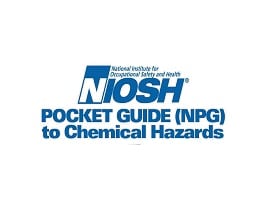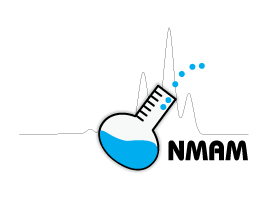Hydrogen Sulfide

Overview
CAS No. 7783-06-4
Hydrogen sulfide (H₂S) is a colorless gas with a strong odor of rotten eggs. Exposure to hydrogen sulfide may cause irritation to the eyes and respiratory system. It can also cause apnea, coma, convulsions; dizziness, headache, weakness, irritability, insomnia; stomach upset, and if liquid: frostbite. Workers may be harmed from exposure to hydrogen sulfide. The level of exposure depends upon the dose, duration, and work being done.
Hydrogen sulfide is used in many industries. For example, it’s used to produce textiles. Some examples of workers at risk of being exposed to hydrogen sulfide include the following:
- Factory workers in plants where rayon textiles are manufactured
- Petroleum and natural gas workers involved in drilling and refining
- Workers in wastewater treatment industries
- Agricultural workers on farms with manure storage pits or landfills
NIOSH recommends that employers use Hierarchy of Controls to prevent injuries. If you work in an industry that uses hydrogen sulfide, please read chemical labels and the accompanying Safety Data Sheets for hazard information. Visit NIOSH’s page on Managing Chemical Safety in the Workplace to learn more about controlling chemical workplace exposures.
The following resources provide information about occupational exposure to hydrogen sulfide. Useful search terms for hydrogen sulfide include “hydrosulfuric acid,” “sewer gas,” and “sulfuretted hydrogen.”
NIOSH Chemical Resources
Related NIOSH Resources
- NIOSHTIC-2 search results for hydrogen sulfide—NIOSHTIC-2 is a searchable database of worker safety and health publications, documents, grant reports, and journal articles supported in whole or in part by NIOSH.
- NIOSH Worker Health Study Summaries—NIOSH conducts research to prevent illnesses and injuries in the workplace. The NIOSH Worker Notification Program notifies workers and other stakeholders about the findings of these research studies.
- Immediately Dangerous to Life or Health (IDLH) Value Profile: Hydrogen sulfide—The IDLH documents the criteria and information sources used by NIOSH to determine immediately dangerous to life or health concentrations.
Selected Publications
- NIOSH Criteria Documents: Comprehensive Safety Recommendations for Land-Based Oil and Gas Well Drilling—DHHS (NIOSH No. 83-127. Contains a standard for mitigation of exposure to hydrogen sulfide to prevent adverse effects over a working lifetime.
- NIOSH Criteria Documents: Criteria for a Recommended Standard: Occupational Exposure to Hydrogen Sulfide—DHHS (NIOSH) Publication No. 77-158. Contains a standard for mitigation of exposure to hydrogen sulfide to prevent adverse effects over a working lifetime.
- NIOSH ALERT: Preventing Deaths of Farm Workers in Manure Pits—DHHS (NIOSH) Publication No. 90-103 (May 1990) This Alert describes seven deaths from asphyxiation (suffocation) that occurred during two incidents involving entry into manure pits.
- NIOSH Occupational Health Guideline for Hydrogen Sulfide
- Fatality Assessment and Control Evaluation (FACE) Program—The Fatality Assessment and Control Evaluation (FACE) program investigates fatal occupational injuries.
| Number | Title |
| 01MI061, 01MI063 | Two Individuals Overcome By Hydrogen Sulfide Gas While Cleaning a Farm Facility Water Well With 28% Liquid Muriatic Acid. |
| 94MN057 | Waste Hauling Service Worker Dies After He Collapsed In An Underground Manure Waste Pit. |
| 94MN045 | Farmer Asphyxiated in Manure Waste Pit. |
| 92NJ020 | Police Officer Drowns After Being Overcome by Hydrogen Sulfide While Attempting Rescue of Construction Worker |
| 91CO074 | Sanitation Worker Dies When Rescuing Co-worker From Underground Sewer Vault. |
| 9228 | Hog Farm Co-Owner and Employee Die of Hydrogen Sulfide Poisoning in Manure Pit–Minnesota. |
| 8928 | Two Maintenance Workers Die After Inhaling Hydrogen Sulfide in Manhole. |
| 8946 | Five Family Members Die After Entering Manure Waste Pit on Dairy Farm. |
Related Resources
- ATSDR Medical Management Guidelines: Hydrogen Sulfide
- ASTDR–ToxFAQs: Hydrogen Sulfide
- ASTDR Toxicological Profile for Hydrogen Sulfide/Carbonyl Sulfide
- EPA Chemistry Dashboard
- EPA Acute Exposure Guideline Levels: Hydrogen Sulfide
- EPA Toxicological Review of Hydrogen Sulfide
- EPA Integrated Risk Information System: Hydrogen Sulfide
- NLM Hazardous Substance Data Bank: Hydrogen Sulfide
- NLM Haz-Map: Hydrogen Sulfide
- OSHA Sampling and Analytical Methods: Hydrogen Sulfide
- OSHA Chemical Sampling Information: Hydrogen Sulfide
- OSHA (Oil and Gas Well Drilling): Hydrogen Sulfide
- OSHA Fact Sheet: Hydrogen Sulfide
- OSHA Hazard Communication
- New Jersey’s Hazardous Substance Fact Sheets: Hydrogen Sulfide
International Resources
- Canadian Centre for Occupational Health and Safety (CCOHS): Hydrogen Sulfide
- European Chemicals Agency (ECHA): Hydrogen Sulfide
- Gestis Substance Database
- ILO International Chemical Safety Card: Hydrogen Sulfide
- IPCS INCHEM search results for hydrogen sulfide
- OECD Global Portal to Information on Chemical Substances
- WHO (CICAD 53): Hydrogen Sulfide
- WHO (Environmental Health Criteria 19): Hydrogen Sulfide
- WHO (Air Quality Guidelines): Hydrogen Sufide



